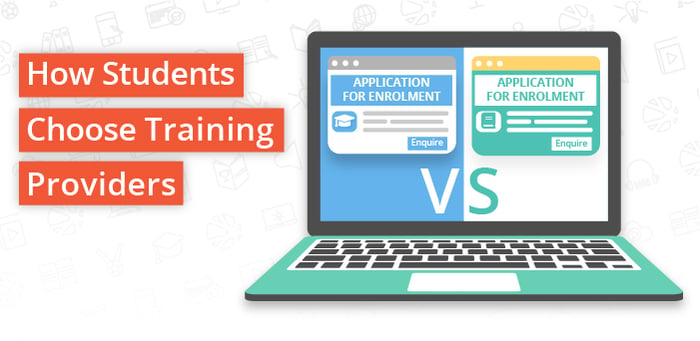
You have a website. Great! Your SEO and marketing strategies are luring students to your website. You're converting visitors into leads for your college. Fantastic! Your student enrolment process is simple and seamless. Amazing!
But how do you get students to make that final call and choose your institution over others? To answer this question, think about the differentiating factors that students look out for before making their absolute and final decision. Or continue reading to gain insight into these simple, yet very effective steps in making your learning facility a real knockout!
In this blog post, we outline significant factors that will make students see your institution and training programmes as more desirable than the competition.
1. Course Delivery Mode
Covid-19 has completely repaved the education landscape. The delivery mode has predominantly moved online during this period, and it won’t be changing anytime soon. To increase the attractiveness of your institution as an education provider, make eLearning an option. Whether you opt to do this via Moodle, Blackboard, and the like, eLearning is delivering your courses via a computer or other digital device, allowing technology to facilitate learning anytime, anywhere. Not only will this give your learning facility a global advantage and possible presence, but it will show students that your institution understands the need for convenience and various modes of learning, other than standard class-based learning.
Looking to set up your eLearning environment? Roll-out Moodle in just 7 days!
2. Experienced Trainers
Being the best of the best education provider starts with being trained by the best. Having driven, knowledgeable trainers can take your institution from being overlooked to highly ranked. Make your trainer's experience known on your website, through social media and marketing mailers. Not only will this give students peace of mind to register at your college, but it will drive excitement amongst students who are serious about their academics.
Ikon Institute of Australia for example has a page on its website solely dedicated to showcasing its team's experience in a fun, yet professional way, giving students the reassurance that they will be trained by highly qualified and experienced professionals.
3. Pricing and Delivery Flexibility
Unprecedented times bring uncertainty to students. Covid-19 has had a detrimental impact on jobs across the globe. Due to this fact, many face uncertainties pertaining to job security. Entice students and make your learning facility more appealing by showing them that you acknowledge this fact.
Do this by providing flexibility as a training provider, such as offering the option to defer a course if your student's circumstances change. Giving this option will reassure students that they can pick up where they left off should they reach a potential financial roadblock or simply need some time to take a breather.
4. International or National Accreditation
While some unaccredited programs might offer valuable learning experiences and have other benefits, the drawbacks usually override these. Students generally avoid attending non-accredited programs as this may result in being ineligible for financial aid, not being able to transfer credits to another school, and not being able to obtain appropriate professional licensure in their field of choice.
Accreditation can make a drastic difference between embarking on a thrilling career path or being saddled with debt and worthless credit. Because of these reasons, students don't want to dedicate hours of their time to complete a course, only to receive an unrecognised and limiting accreditation.
Make sure you are seen as a desirable training provider and learning facility by ensuring that you are accredited on an international or national level. This will give your students the peace of mind that their qualifications will be officially recognised and enable future education and training pathways without limitation. For example, in the United Kingdom, the Chartered Institute of Personnel Development (CIPD) is the main professional body to accredit and award professional human resources (HR) qualifications. Whereas, in South Africa, institutions are regulated by the Sector Education and Training Authority (SETA), which is a vocational skills training organisation in South Africa.
Find out what accreditation your institution will require to be more desirable for students while being one step ahead of your competition.
Knowing what students are looking for in a training facility will help you identify what you are lacking as a training provider. Take the time to work on these factors and get ready to welcome more new learners through your doors.



COMMENTS